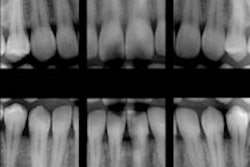
There is an ongoing debate about digital radiography (DR) versus film, but a survey of New Zealand practitioners has found that film users are less satisfied with their systems than their digital counterparts. Among the former group, one-third of users are considering taking the leap into digital.
The findings of a survey of practitioners in New Zealand suggest that those who are still using film would find the transition to be worth the effort (New Zealand Dental Journal, September 2013, Vol. 109:3, pp. 107-114). "Many dental practitioners have still not adopted digital radiography, yet its users are more satisfied with their radiography systems than are conventional film users," wrote the researchers from the maxillofacial and dental department at Hawkes Bay Hospital in Hastings, New Zealand. "The latter may find changing to a digital system to be satisfying and rewarding."
The researchers wanted to learn about the growth of digital radiography in the country, but also to find out what radiography systems are being used and gauge the perception of film versus digital radiography. "User-friendliness" investigations have yielded disparities, the researchers noted, although cost is the main deciding factor when considering adoption of a digital system. There is no lack of awareness of DR, and "digital radiography equipment was the most popular technology system aspired to by dentists" in New Zealand, according to previous study (N Z Dent J, September 2008, Vol. 104:3, pp. 104-108).
“Digital radiography equipment was the most popular technology system aspired to.”
Inevitably, practitioners have to weigh the advantages offered by digital radiography, such as smaller radiation dose, ease of image storage and communication with other practitioners, image manipulation, and immediate image display, with the technology's disadvantages, including high cost, time spent learning a new system, and need to stay abreast of new developments to the technology.
The researchers selected 800 registered dental practitioners from the Dental Council of New Zealand 2012 Dentists' Register and mailed them a survey in January and February of 2012. They requested sociodemographic data and other information, such as the average number of posterior bitewing and posterior radiographs acquired each day, how frequently radiographs had to be retaken and why, who exposed and processed the radiographs, and where they sourced their radiographic supplies.
Respondents were also asked about Internet, software, and electronic health record (EHR) usage. Those who did not use digital radiography were asked why they used film instead and asked additional questions about whether they had previously worked with DR, if their patients asked about it, and did they plan on switching to digital in the near future.
After exclusions, 417 questionnaires were returned from 755 dentists for a response rate of 55%. Almost two-thirds of the respondents were general practitioners, 78% used EHRs, and more than half of the respondents used digital radiography. The survey also revealed that "reported retake rates were lower among conventional film users than digital film users," the researchers wrote.
Among film users, they found the following:
- 55% had used digital radiography before.
- 56% were satisfied with film.
- 45% felt digital radiography is too expensive.
- 33% were interested in buying a digital system going forward.
- 62% felt that they did not lack knowledge of digital radiography.
- 26% said there were too many technical problems with digital radiography.
- 20% disagreed that digital radiography gives a better clinical image, while 37% agreed.
Not surprisingly, age was a significant factor: Fewer than 40% of the respondents age 61 or older used digital radiography. In contrast, 69% of the practitioners surveyed who were ages 31 to 40 used DR.
Impending retirement was among the factors preventing the adoption of digital radiography. So was the cost of computerizing a practice and buying equipment. "Another reason for not using digital systems was the complexity of integrating with existing practice software," the researchers noted. The size of the sensors in charge-coupled devices (CCD) proved to be relevant. Dentists expressed concerns about patient comfort and the difficulty in placing CCD sensors in pediatric, geriatric, or special needs patients.
Nonetheless, the data suggest that the concerns of users will be outweighed by the advantages of digital radiography if they implement it.



















